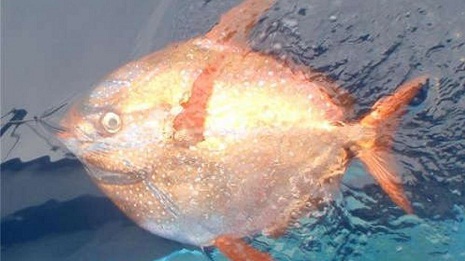Live Science reports that during the NOAA’s study of the fish, researchers attached temperature sensors and satellite tags to the opah that allowed them to track its movements for eight months. The scientists monitored its body temperature as the fish dove down into cooler parts of the water.
Scientists found that no matter what temperature the fish was at, it stayed five degrees cooler than the surrounding water.
The researchers also found that the opah’s blood vessels in the gill tissue are arranged so that the vessels transporting cool blood from the gills are in contact with those that move the warm blood in the opposite direction. In the process, the incoming blood is warmed.
The fish is able to increase the temperature of its heart, which helps the fish dive into deeper depths and remain there for long periods of time. Other fish such as tunas or lamnid sharks have to return to the surface in between dives to keep warm.
Opah are mainly found in tropical and temperate waters. The fish are not caught in large numbers because they do not travel in schools, the NOAA says.
More about:
















































